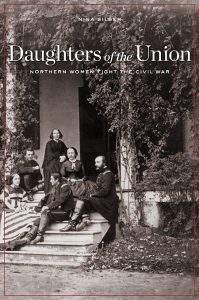Books: 4 Great Reads By or About Women
I love literature, and as an English major I’ve read a lot of fiction over the years. But these days it seems I read mostly nonfiction.
 Just finished dipping into an academic book I picked up in the Library of Congress’s gift shop, titled Daughters of the Union: Northern Women Fight the Civil War, by Nina Silber (2005).
Just finished dipping into an academic book I picked up in the Library of Congress’s gift shop, titled Daughters of the Union: Northern Women Fight the Civil War, by Nina Silber (2005).
The book caught my eye because the mother of Eliza Scidmore ministered to soldiers in Madison, Wisconsin, and also in Washington, where she moved with young Eliza and her brother early in the Civil War. The book includes references to a community supper — of 600 people — that Madison’s residents held for departing soldiers. I know from other sources that Mrs. Scidmore and one of her sisters were among the key organizers.
Some historians have seen the Civil War as an important influence in increasing the autonomy of women, thereby laying the foundation for a later wave of feminism that led to women’s universal suffrage. Silber offers a much more nuanced view. But it’s an interesting look at gradually changing attitudes.
I found especially intriguing the accounts of how the reform-minded early Republican Party found favor with a lot of Northern women who had long been sympathetic to the cause of abolitionism. Eliza Scidmore’s uncle, an influential Wisconsin newspaperman named David Atwood, played a role in founding the Republican Party. The Scidmores were staunch Republicans.
Next up on deck:
 Nothing Daunted, by The New Yorker’s executive editor, Dorothy Wickenden, on the adventures of her grandmother and a college friend who went West in 1916 to teach school at a remote outpost in Colorado.
Nothing Daunted, by The New Yorker’s executive editor, Dorothy Wickenden, on the adventures of her grandmother and a college friend who went West in 1916 to teach school at a remote outpost in Colorado.- The insanely popular The Immortal Life of Henrietta Lacks, by Rebecca Skloot (a story I remember first reading about a decade ago as an article in a Johns Hopkins magazine).
- The Warmth of Other Suns, New York Times reporter Isabel Wilkerson’s Pulitzer Prize-winning book on the huge migration of blacks out of the South early in the 20th century.